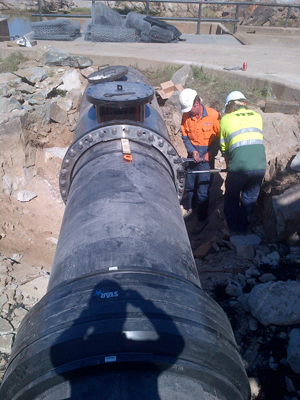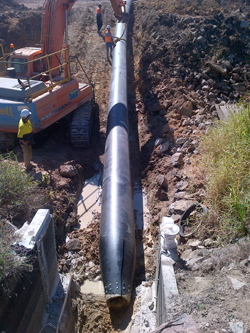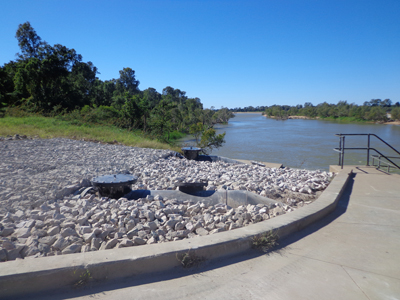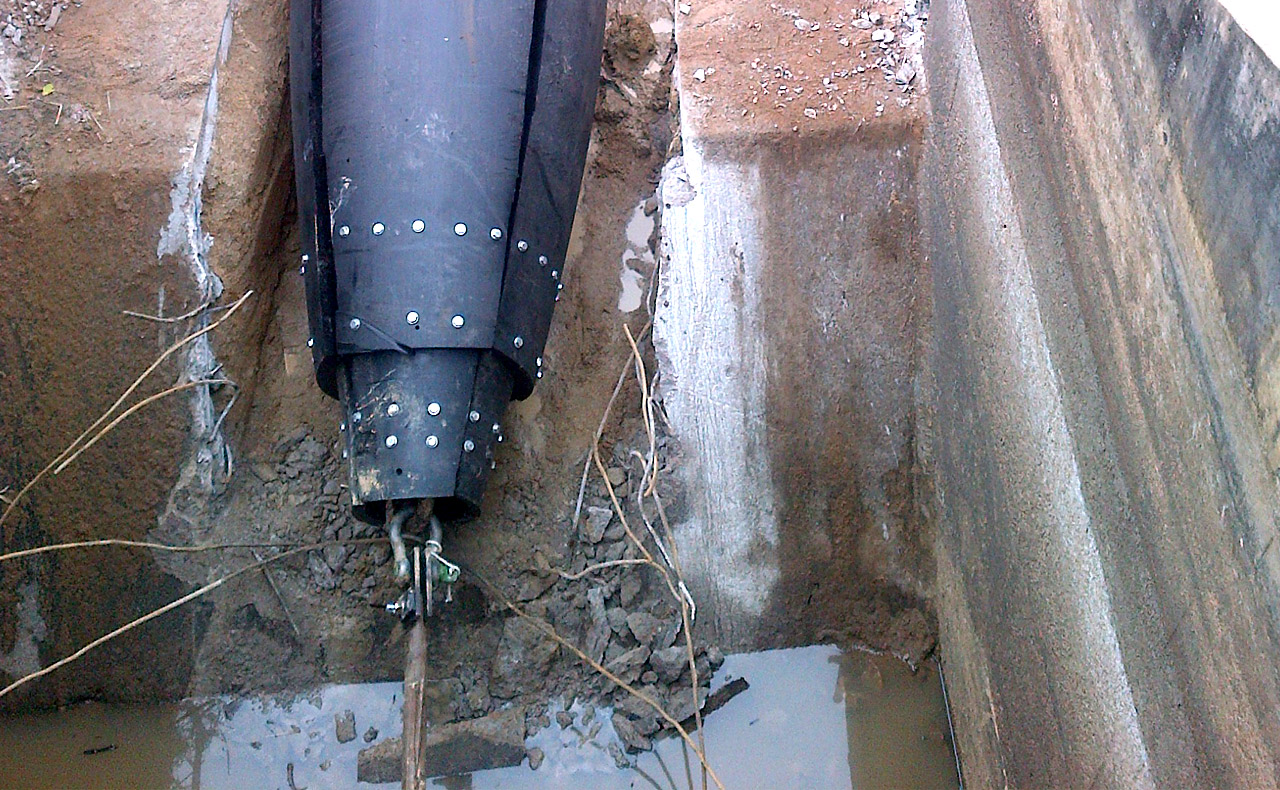Presented with a unique pipe relining challenge by North Burdekin Water Board, Downer PipeTech came up with an alternative solution to the original CIPP tender – using slip-lining technology to save the client hundreds of thousands of dollars.
North Burdekin Water Board (NBWB) owns and operates the Rocks Pump Station, in Ayr, Queensland, which pumps water from the Burdekin River via two separate 165m lengths of DN900 and DN1350 reinforced concrete pipelines and discharges into the nearby Sheepstation Creek that forms the start of the open channel irrigation distribution system.
 NBWB had experienced pipework leaks from both pipelines due to deteriorated rubber rings in the pipework joints. An internal CCTV inspection and condition assessment of the pipeline identified a number of joints had root penetration, with some showing signs of separation. To add to NBWB’s concerns, a number of pipework sections were showing longitudinal or circumferential cracks.
NBWB had experienced pipework leaks from both pipelines due to deteriorated rubber rings in the pipework joints. An internal CCTV inspection and condition assessment of the pipeline identified a number of joints had root penetration, with some showing signs of separation. To add to NBWB’s concerns, a number of pipework sections were showing longitudinal or circumferential cracks.
After reviewing the information, NBWB requested tender submissions from suitably qualified contractors to reline the pipes with a cured-in-place pipe (CIPP) structural liner. A significant restriction placed on tendering contractors was an extremely tight program window of just 18 days –the length of time during which the mains could be shut down, which could only be changed in the event of weather-induced impacts, due to the critical supply of irrigation water and existing contracts in place with users. In addition, the works were adjacent to Little Salt Pan Creek, which meant there was an increased environmental focus on the project.
The Downer PipeTech project team reviewed the tender documents taking into account all the information provided. The pipelines carried raw water from the Burdekin River and any design had to take into account the amount of sand and silt in the water and the abrasion effects on the potential liner. The design also had to take into account both positive pressure (24m head) and negative pressure (-8m head) of the pumps, and any solution had to carry a 50-year design life.
 After a thorough review, ITS submitted an alternative tender to the original CIPP lining request, which was to slip-line the existing pipelines with polyethylene pipe and grout fill the annulus. This alternative solution met all the design criteria with the added bonus of saving the client hundreds of thousands of dollars, when compared to the CIPP lining cost.
After a thorough review, ITS submitted an alternative tender to the original CIPP lining request, which was to slip-line the existing pipelines with polyethylene pipe and grout fill the annulus. This alternative solution met all the design criteria with the added bonus of saving the client hundreds of thousands of dollars, when compared to the CIPP lining cost.
Following a successful tender proposal, NBWB engaged ITS to deliver the alternative option, and work began on procuring materials and planning the installation for what was a very limited window of opportunity.
The Pipeline included several changes in both vertical and horizontal alignment. The scope of works included: design and construction of access where the steel pipelines joined the existing concrete pipes from the pumps, removal and replacement of steel flaps at discharge end headwall, modification and reinstatement of existing stilling basins at discharge end, installation of rock mattress at the exposed end connection tapers, and reinstatement of Sheep Station Creek batter.
Works commenced on schedule and each 165m installation went according to program without incident. Excavations were used to gain access to the pipe at the low points at each end and the high point in the middle of the pipeline to inject the high-flowing cementitous grout and stabilise the polyethylene. ITS also managed the groundwater during the works, which ensured protection of the creek quality and local flora and fauna.
ITS successfully completed all pipe rehabilitation works to the Rocks Pump Station Rising Mains without incident, under budget and three days ahead of schedule. The slip-lining of the existing rising mains was the final phase associated with rejuvenating the existing pump station, and NBWB have since reported a 30% drop in power costs associated with pumping since the project was completed and will now provide its customers with efficient, reliable pumping for many years to come.

The completed works




